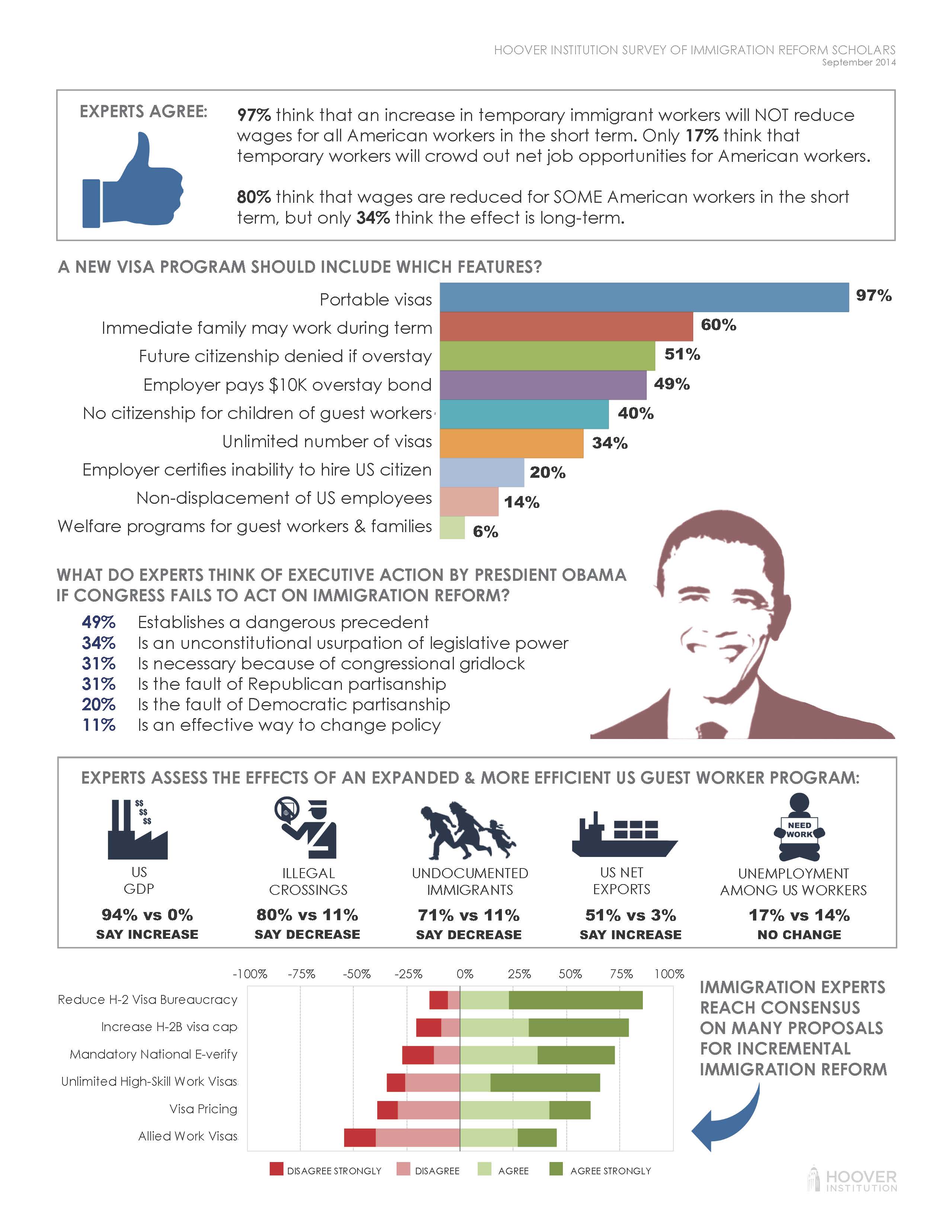- Law & Policy
- Immigration
The “year of immigration reform” has not unfolded like anyone expected as recently as the publication of our inaugural issue of Peregrine. Policy makers in Washington didn’t pass any news laws to impact policy, but events on the ground took on a life of their own.
The emergence of a long-simmering crisis of foreign children surging across the southern border of the United States grabbed the public’s attention during the summer. Tens of thousands of children, mostly teenagers, were drawn to the United States amid rumors of a presidential amnesty; the reality is that almost all of them are being allowed to stay indefinitely in the United States based on the administration’s interpretation of the 2008 law meant to prevent human trafficking. The Obama administration was clearly unprepared for the crisis, despite revelations that it had been warned for years by experts inside the Department of Health and Human Services and people outside the federal government about the burgeoning wave.
The controversy forced legislators in Washington finally to admitt the obvious: comprehensive reform legislation, passed by the Senate in 2013 but ruled out by House leadership, has collapsed. Democrats insisted that comprehensive reform was essential, but the all-or-nothing road has once again led to nothing. In one sense, recent events are a setback, especially given White House hints about giving up on legislation in favor of executive fiat. But in another sense, events validate one of Peregrine’s founding principles: pragmatic, incremental reform is the way forward.
In this issue, scholars focus on the topic of temporary guest worker visas. Work visas are the middle ground that extremists tend to ignore. One extreme calls for open borders and automatic citizenship for illegal immigrants; the other calls for deportations and a fortified border. The unheralded, commonsense approach is to allow immigrants to work in America temporarily, not as a pathway to a citizenship or as indentured servants to be exploited. The nation has a history of guest work programs that are active today have become bureaucratic and inefficient.
These essays point toward a better way. The consensus we found in this issue’s survey of experts offers a blueprint for legislation that appeals to policy makers and voters left, right, and center. It may not happen this year, but common sense cannot be denied and manipulated by cynical politicians indefinitely.
Each issue of Peregrine considers a handful of new ideas for pragmatic, incremental reform. The topic of this issue is guest worker visas, a long-standing gateway for temporary legal migration. Thirty-five members of our working group (organized by the Hoover Institution but from a wide variety of research institutions) responded to a survey that evaluates each idea on a four-point scale from “strongly agree” to “strongly disagree.” Here are the ideas considered, ranked in order of the percentage of experts that agree:
|
86% Reduce H-2 Visa Bureaucracy. There is no limit to temporary work visas for migrant agricultural workers under current law (H-2A), but the regulatory and bureaucratic burdens constrain the number of agricultural visas (roughly 180,000 per year) and make the process costly and uncertain. |
|
79% Increase H-2b Visa Cap. Non-agricultural temporary workers are capped, unlike agricultural workers. The annual number of H-2B visas will be unlimited. |
|
73% Mandatory National E-Verify. Make the free E-Verify program mandatory for all US employers to assess all new employees. The E-Verify program is managed by the federal government to check the citizenship status of employees and the eligibility status of foreign workers, free of charge. It is now used by over 400,000 employers. Currently, E-Verify is not mandatory for private employers unless required by state law, which is the case in one-third of the states. |
|
66% Unlimited High-Skill Work Visas. The United States currently caps "high-skilled" visas (H-1B) at 65,000 per year, plus an additional 20,000 for holders of US graduate degrees. For fiscal year 2015, USCIS received 172,500 applications in seven days and then closed application window. A good reform would allow unlimited H-1B visas. |
|
61% Visa Pricing. Rather than a fixed number of work visas, or extensive certification paperwork, allow for the flow of low-skill and high-skill work visas to be set in equilibrium by charging a $10,000 bond (or some other amount) for an annual visa. Employers would lose the bond if the migrant worker overstayed. |
|
45% Allied Work Visas. Allow for work visas for any citizen of countries deemed by the Senate as close allies of the United States such as Great Britain, Australia, South Korea and Japan. Participants would have to apply 6 months prior to entry, pass background checks, and would receive no benefits of US citizenship. |

All but one of the policy ideas had majority support, the exception being Allied Work Visas. Although this program has not been articulated, we included it as a pilot idea to see if the implication of vastly simplified paperwork was an overriding principle. It is not. Most experts surveyed prefer to keep the focus on individual migrants.
The results confirm a much deeper level of consensus on immigration reform than one might expect given the controversy this topic seems to have in public debates. This is a positive sign that the survey approach does indeed identify areas that Congress can build a legislative approach around.
Thirty of the 35 experts (or 86%) found the highest level of agreement on the simple reform of reducing H-2 visa bureaucracy, thus meriting a closer look. The rules that impede faster and wider hiring of H-2 migrants include certifications that “there are not enough US workers who are able, willing, qualified, and available” and that it will not “adversely affect” nonemployees who are US citizens. Employers also must prove the job is temporary. Each step requires another round of paperwork, approval, and often numerous clarifications and appeals. The overwhelming support for reform reflects the de facto barrier the federal bureaucracy creates to legal migrant workers as well as the budgetary costs to enforce it.
A majority of experts favor the market-based alternative (61%) of Visa Pricing. Arguably, using market mechanisms is often controversial prior to implementation, such as pollution cap-and-trade programs and licenses auctions for fishing rights; it is thus worth noting that only one in four disagreeing votes felt “strongly” (the lowest ratio).
E-Verify has been in place for many years but remains controversial. Hence, the biggest surprise in our survey might be the high percentage (73%) of experts who support making the program mandatory across all employers nationally.
Tim Kane
Editor















